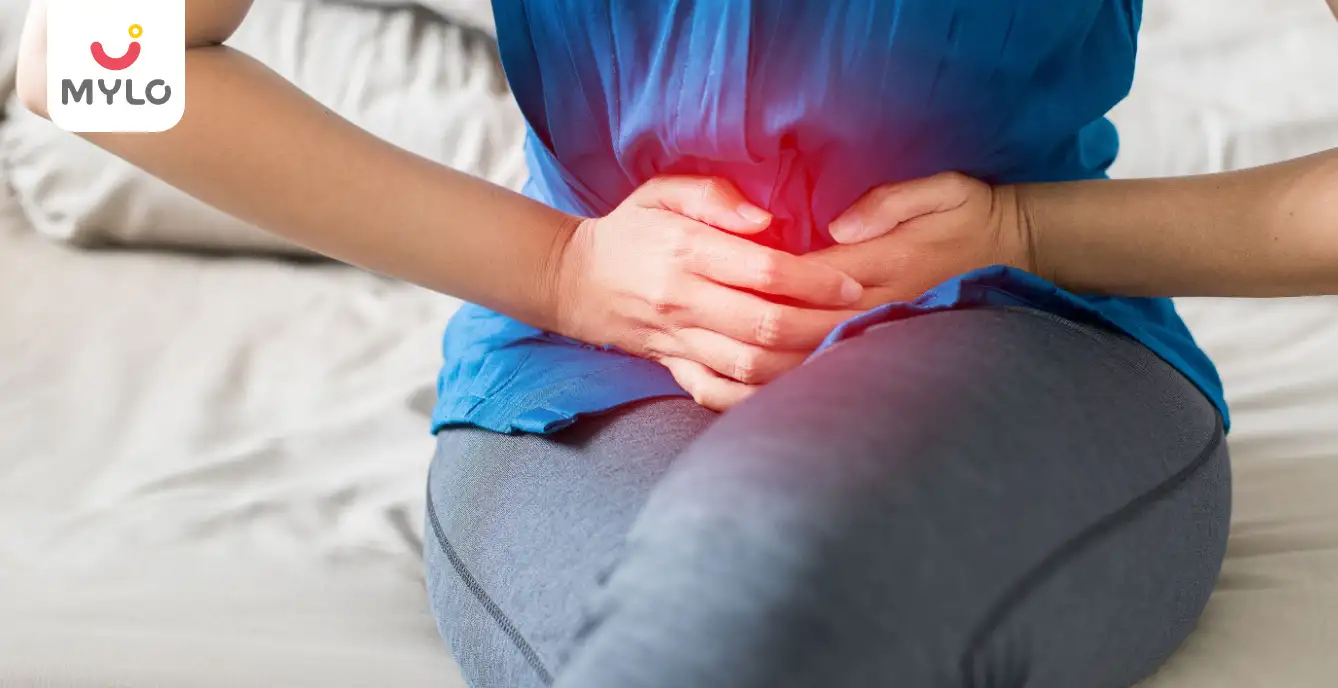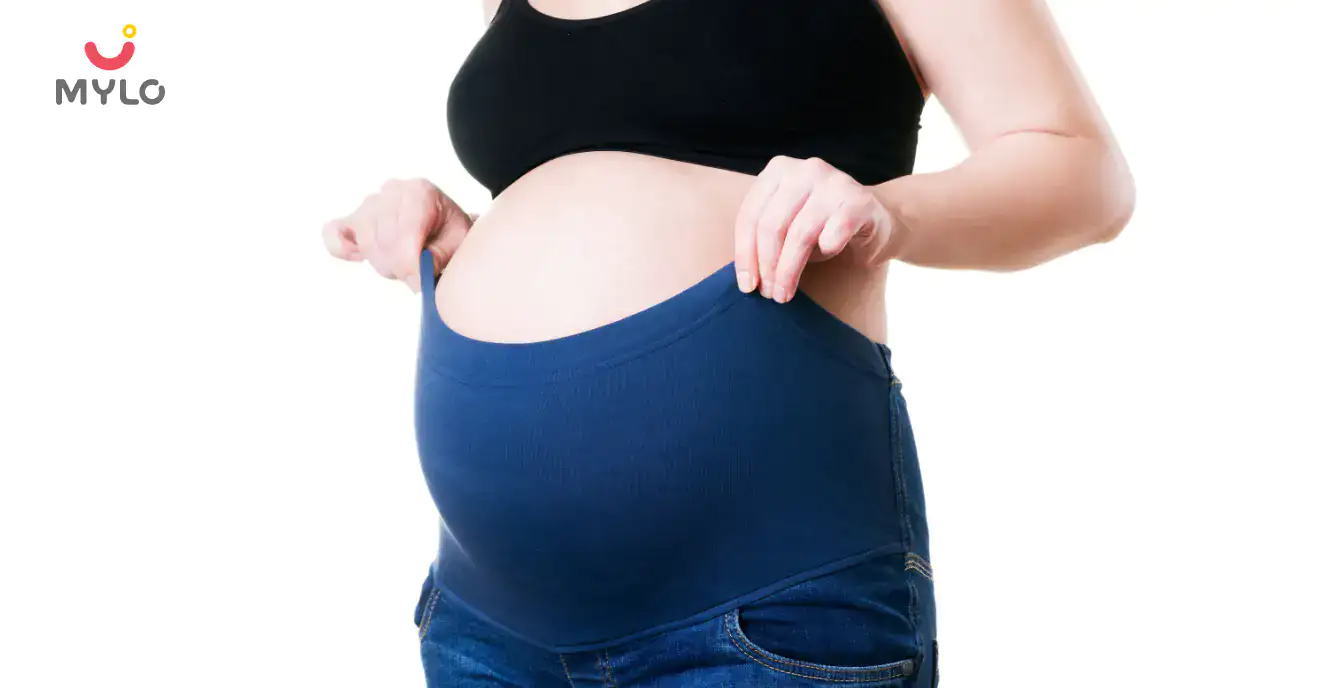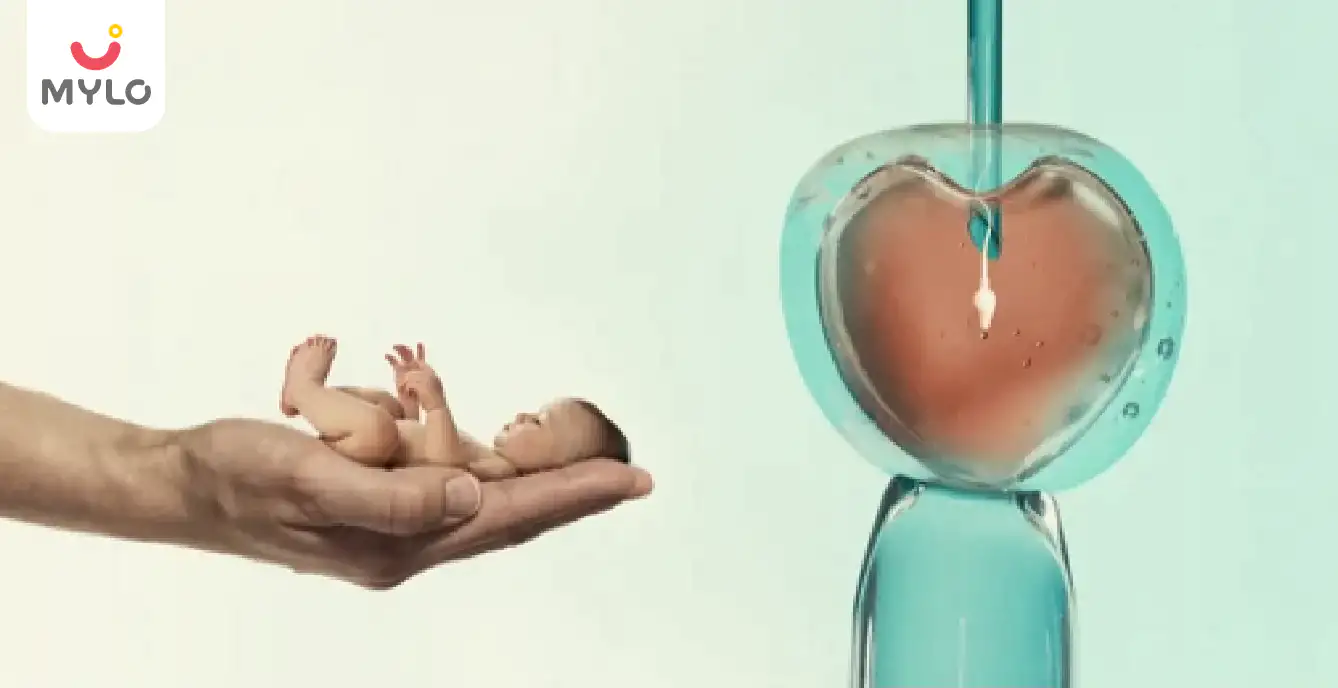Home

Pregnancy Tests

Symptoms of Pregnancy After HSG Test: Understanding Your Chances and Identifying Clues
In this Article

Pregnancy Tests
Symptoms of Pregnancy After HSG Test: Understanding Your Chances and Identifying Clues
Updated on 7 July 2023



Medically Reviewed by
Dr. Shruti Tanwar
C-section & gynae problems - MBBS| MS (OBS & Gynae)
View Profile

Are you wondering if you could be pregnant after undergoing an HSG test? Well, you're not alone! Many women have questions and concerns about the symptoms they may experience following this procedure. In this article, we'll dive into the topic of pregnancy after an HSG test, exploring the chances of conception and providing clues to help you identify potential symptoms of pregnancy after HSG test.
So, if you've recently had an HSG test and are curious about what it could mean for your fertility journey, keep reading for some insightful information. Let's get started!
What is an HSG test and its purpose?
An HSG (Hysterosalpingogram) test is a procedure that involves injecting a dye into the uterus and fallopian tubes to evaluate their condition. It is commonly used to diagnose fertility issues and determine if the fallopian tubes are blocked or damaged. The test provides valuable information to both patients and healthcare professionals, allowing for proper diagnosis and treatment planning.
What are the chances of pregnancy after HSG test?
Many women wonder after doing HSG test chances of pregnancy. While the test itself does not directly increase or decrease the chances of pregnancy, it can provide valuable insights into the condition of the reproductive system. Understanding these factors can help individuals make informed decisions and take appropriate steps towards achieving pregnancy.
You may also like : What Causes Low HCG Levels in Early Pregnancy & How to Increase HCG Levels in Pregnancy by Food?
What are the factors affecting chances of natural pregnancy after HSG test?
Let us understand the factors that can affect your chances of establishing a pregnancy after HSG test:
1. Fallopian tube condition:
The HSG test can reveal whether the fallopian tubes are open, blocked, or damaged. If the tubes are open, the chances of natural pregnancy are higher. However, if the tubes are blocked or damaged, the chances may be reduced, and alternative fertility treatments may be necessary.
2. Uterine abnormalities:
The HSG test also provides information about the condition of the uterus. If there are any abnormalities present, such as uterine fibroids or polyps, it may impact the chances of pregnancy. Depending on the severity, treatment options can be explored to improve the chances of conception.
3. Timing:
The timing of the HSG test in relation to the menstrual cycle can also affect the chances of pregnancy. Ideally, the test should be performed shortly after menstruation ends to minimize the risk of interfering with a potential pregnancy. It is important to discuss the timing with your healthcare provider to ensure the best possible outcomes.
4. Age:
Age plays a significant role in fertility, and it can impact the chances of natural pregnancy after an HSG test. As women age, the quality and quantity of their eggs decline, making conception more challenging. It is important to consider age as a factor when assessing the chances of pregnancy after the test.
5. Overall health and lifestyle:
A woman's overall health and lifestyle choices can influence her chances of pregnancy. Factors such as body weight, smoking, alcohol consumption, and stress levels can all impact fertility. By maintaining a healthy lifestyle, individuals can improve their chances of conceiving naturally after an HSG test.
What are the symptoms of pregnancy after HSG test?
Let us now understand the signs and symptoms that indicate a natural pregnancy after HSG test:
1. Missed period:
One of the most common and noticeable symptoms of pregnancy is a missed period. If you have undergone an HSG test and experience a missed period, it could be a clue that you may be pregnant.
2. Breast changes:
Pregnancy hormones can cause changes in the breasts, such as tenderness, swelling, or darkening of the nipples. If you notice these changes after an HSG test, it may indicate a potential pregnancy.
3. Nausea and vomiting:
Known as morning sickness, nausea and vomiting are common symptoms of pregnancy. If you experience these symptoms after the HSG test, it could be a sign that you are pregnant.
4. Fatigue:
Feeling unusually tired or exhausted is another symptom that may indicate pregnancy. If you find yourself needing more rest than usual after the HSG test, it could be a clue that you are expecting.
5. Frequent urination:
Pregnancy can cause an increase in the frequency of urination. If you notice that you are making more trips to the bathroom after the HSG test, it could be a sign of pregnancy.
6. Food cravings and aversions:
Changes in food preferences, such as cravings for specific foods or aversions to certain smells or tastes, can be a symptom of pregnancy. If you experience these changes after the HSG test, it may indicate a potential pregnancy.
7. Mood swings:
Hormonal changes during pregnancy can cause mood swings and emotional fluctuations. If you notice significant changes in your mood or emotions after the HSG test, it could be a clue that you are pregnant.
Differentiating between pregnancy symptoms and post-HSG test effects
It is important to note that while the symptoms mentioned above can be indicative of pregnancy, they can also be attributed to the effects of the HSG test itself. The test can cause temporary hormonal fluctuations and physical discomfort, which may mimic some pregnancy symptoms.
To differentiate between pregnancy symptoms and post-HSG test effects, it is recommended to wait for a few weeks and observe any changes in symptoms. If the symptoms persist and align with typical pregnancy symptoms, it is advisable to consult with a healthcare professional for further evaluation.
How to increase the odds of pregnancy after HSG test?
Here are some natural ways to increase the chances of pregnancy after HSG test:
1. Maintain a healthy lifestyle:
Eating a balanced diet, exercising regularly, managing stress levels, and avoiding harmful substances such as smoking and excessive alcohol consumption can improve overall fertility and increase the chances of pregnancy after an HSG test.
2. Track ovulation:
Understanding the timing of ovulation can significantly increase the chances of conception. Using ovulation prediction kits or monitoring basal body temperature can help identify the most fertile days in the menstrual cycle.
3. Consider fertility supplements:
Certain supplements, such as folic acid, coenzyme Q10, and vitamin D, have been associated with improved fertility. It is advisable to consult with a healthcare professional before starting any supplements.
4. Explore fertility treatments:
If the HSG test reveals significant reproductive issues, exploring fertility treatments such as in vitro fertilization (IVF) or intrauterine insemination (IUI) may be necessary to increase the chances of pregnancy.
5. Optimize sexual intercourse timing:
Having regular sexual intercourse around the time of ovulation can increase the chances of pregnancy. Understanding the fertile window and ensuring regular intercourse during that period can improve the odds of conception.
6. Seek emotional support:
Dealing with fertility challenges can be emotionally taxing. Seeking support from friends, family, or infertility support groups can provide emotional stability and reduce stress levels, which can positively impact fertility.
7. Follow healthcare provider recommendations:
It is crucial to follow the recommendations and advice provided by healthcare professionals. They have the expertise to guide individuals through the journey of achieving pregnancy and can tailor treatment plans based on individual needs.
You may like : Blood Beta-hCG Test: What Is It, Levels & How to Read It?
When to take a pregnancy test after the HSG test?
After undergoing an HSG test, it is advisable to wait at least two weeks before taking a pregnancy test. This waiting period allows enough time for potential symptoms of pregnancy after HSG test to manifest and for the body to produce detectable levels of the pregnancy hormone, hCG (human chorionic gonadotropin).
Taking a pregnancy test too early may result in a false negative, as the levels of hCG may not be sufficient for detection. Waiting for the recommended time frame will provide more accurate results and reduce the likelihood of confusion or disappointment.
Key Takeaways
Understanding the symptoms of pregnancy after HSG test can provide valuable insights for individuals hoping to conceive. While the test itself does not directly impact the chances of pregnancy, it provides valuable information about the condition of the reproductive system. By understanding the factors that affect natural pregnancy after HSG test and recognizing potential pregnancy symptoms, individuals can take appropriate steps towards achieving their goal.
References
1. Ahmadi F, Haghighi H. (2014). Unsuspected pregnancy during hysterosalpingography. Iran J Radiol.
2. Onwuchekwa CR, Oriji VK. (2017). Hysterosalpingographic (HSG) Pattern of Infertility in Women of Reproductive Age. J Hum Reprod Sci.





Medically Reviewed by
Dr. Shruti Tanwar
C-section & gynae problems - MBBS| MS (OBS & Gynae)
View Profile


Written by
Anupama Chadha
Anupama Chadha, born and raised in Delhi is a content writer who has written extensively for industries such as HR, Healthcare, Finance, Retail and Tech.
Read MoreGet baby's diet chart, and growth tips

Related Articles
Related Questions
Hello frnds..still no pain...doctor said head fix nhi hua hai..bt vagina me pain hai aur back pain bhi... anyone having same issues??

Kon kon c chije aisi hai jo pregnancy mei gas acidity jalan karti hain... Koi btayega plz bcz mujhe aksar khane ke baad hi samagh aata hai ki is chij se gas acidity jalan ho gyi hai. Please share your knowledge

I am 13 week pregnancy. Anyone having Storione-xt tablet. It better to have morning or night ???

Hlo to be moms....i hv a query...in my 9.5 wk i feel body joint pain like in ankle, knee, wrist, shoulder, toes....pain intensity is high...i cnt sleep....what should i do pls help....cn i cosult my doc.

Influenza and boostrix injection kisiko laga hai kya 8 month pregnancy me and q lagta hai ye plz reply me

RECENTLY PUBLISHED ARTICLES
our most recent articles

Sex Life
Trichomoniasis: Meaning, Symptoms, Causes and Risks

Pregnancy Journey
Gallstones in Pregnancy: Symptoms, Complications & Treatment

Fertility
Fertility Massage: A Holistic Approach to Boosting Fertility Your Chances of Conception

Care for Baby
Baby Vomiting After Feeding: Understanding the Causes and Solutions for Upset Stomach

Maternity Fashion
Why do you need to wear a high waisted panty during pregnancy?

IVF Pregnancy
Top 5 Precautions You Should Take After Getting an IVF Treatment
- Baby Kicking During Pregnancy: Unveiling the Wonders of Quickening in Pregnancy
- Daddy duties: Here's your guide to fatherhood
- Four-weeks old baby: Health, growth, care and more
- Baby cloth diapers by Mylo
- When to begin toilet training your child
- Are you a first time dad & scared? Here's some help
- Is your baby 3 months old now? Here's how to set-up a perfect sleep and feeding schedule for your little one?
- Painful Nipples During Breastfeeding: A Step-by-Step Approach for Managing Discomfort
- How to Manage and Alleviate Round Ligament Pain During Pregnancy?
- FSH LH Prolactin Test: What This Group of Tests Can Tell You About Your Fertility
- Why Berbitol is the Missing Piece in Your Supplement Stack
- Top 10 Action Movies to Watch on Netflix in 2023
- Foods to Avoid After Embryo Transfer & Other Precautions to Boost Your Chances
- Semen Analysis: A Comprehensive Look at Male Reproductive Health


AWARDS AND RECOGNITION

Mylo wins Forbes D2C Disruptor award

Mylo wins The Economic Times Promising Brands 2022
AS SEEN IN
















- Mylo Care: Effective and science-backed personal care and wellness solutions for a joyful you.
- Mylo Baby: Science-backed, gentle and effective personal care & hygiene range for your little one.
- Mylo Community: Trusted and empathetic community of 10mn+ parents and experts.
Product Categories
baby carrier | baby soap | baby wipes | stretch marks cream | baby cream | baby shampoo | baby massage oil | baby hair oil | stretch marks oil | baby body wash | baby powder | baby lotion | diaper rash cream | newborn diapers | teether | baby kajal | baby diapers | cloth diapers |








